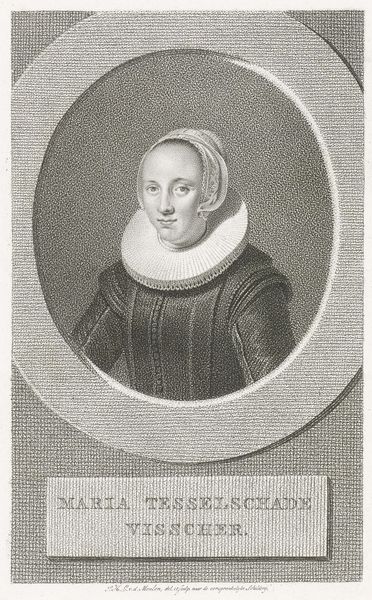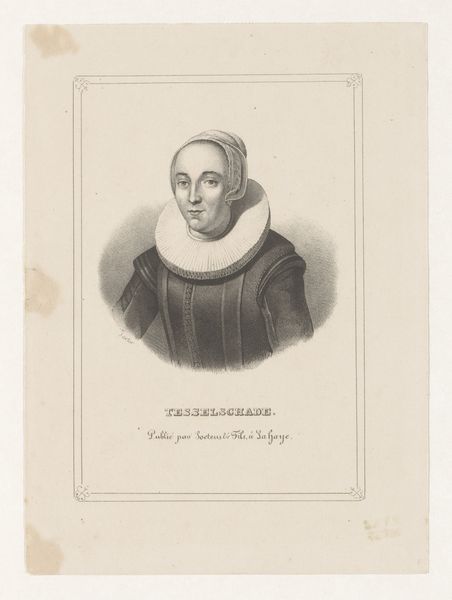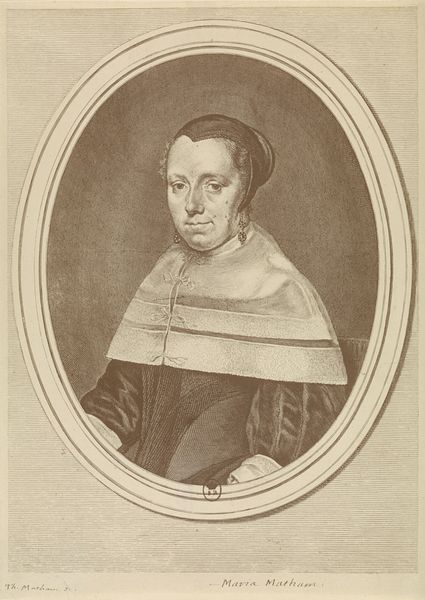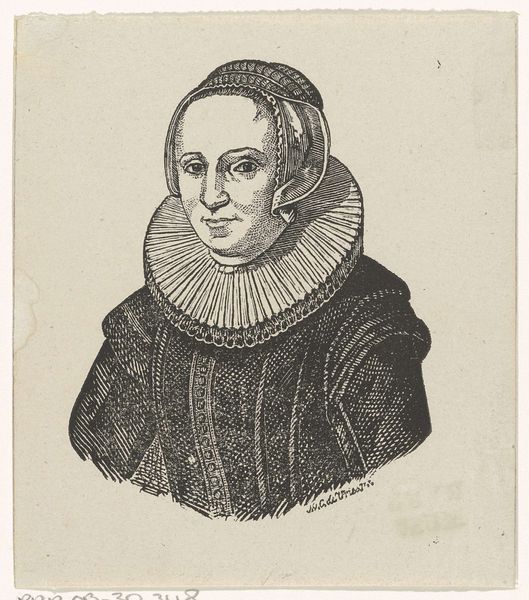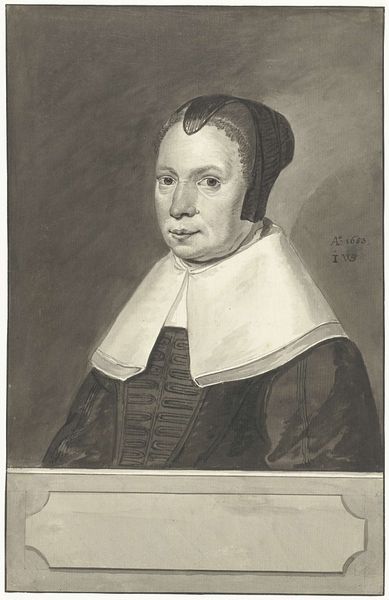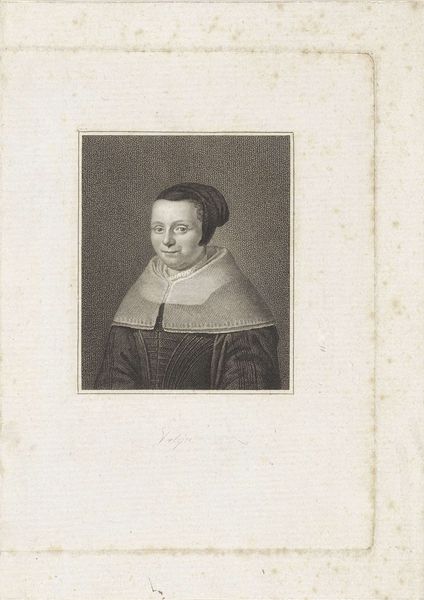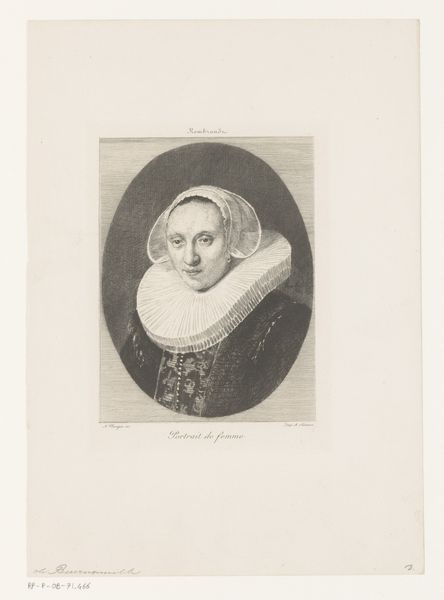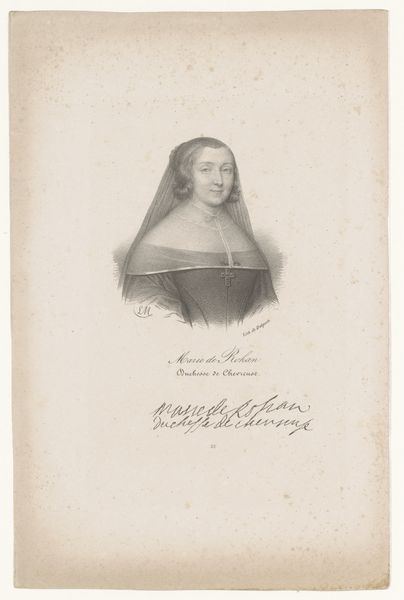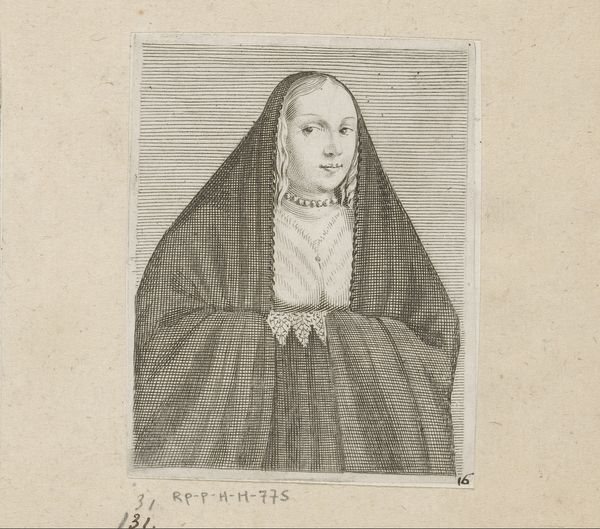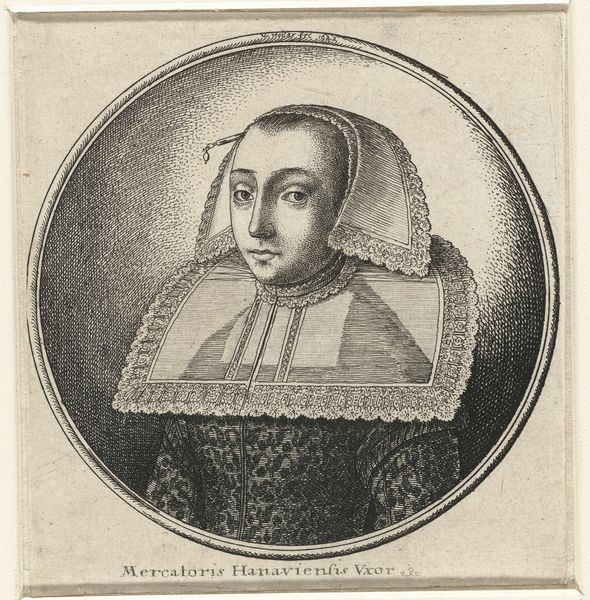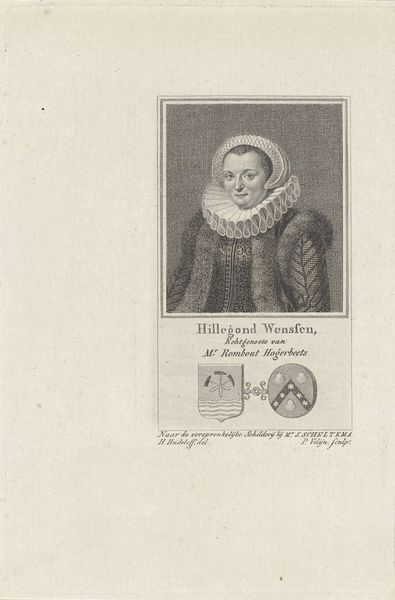
engraving
#
portrait
#
old engraving style
#
figuration
#
personal sketchbook
#
northern-renaissance
#
engraving
Dimensions: height 110 mm, width 86 mm
Copyright: Rijks Museum: Open Domain
Editor: Here we have Willem van Senus's "Portret van een jonge vrouw", dating from 1783 to 1851, currently residing at the Rijksmuseum. It's an engraving, so quite detailed despite being relatively small. What really strikes me is the woman's rather direct gaze. What do you make of this portrait? Curator: The first thing I consider is the role of portraiture in this period. It served a very specific social function, particularly for women. This engraving isn't just about likeness; it's about presenting a certain image to society, reinforcing social hierarchies, even constructing identity through visual representation. Notice how the Northern Renaissance style also echoes a fascination with earlier periods of cultural identity. Editor: So, more than just a face, it's communicating social status? Curator: Exactly. Her clothing, her composure, and even the artistic style, were all carefully considered to project a certain status and perhaps ideals. Who was this woman and how would the public view her as an example? Engravings made these images more accessible than painted portraits. What implications might wider accessibility have had at that time? Editor: Making me think about how prints served a democratizing function by disseminating imagery, creating and circulating new ways of looking. Curator: Precisely! The politics of imagery are so interesting when considering what stories and faces society chooses to depict, archive, and remember. Editor: I hadn't thought about the public consumption element so much, but the potential influence of making imagery like this more available really changes the perspective. Curator: Yes, it allows us to reconsider how portraits such as these both reflect and shaped the socio-cultural milieu of their time.
Comments
No comments
Be the first to comment and join the conversation on the ultimate creative platform.
